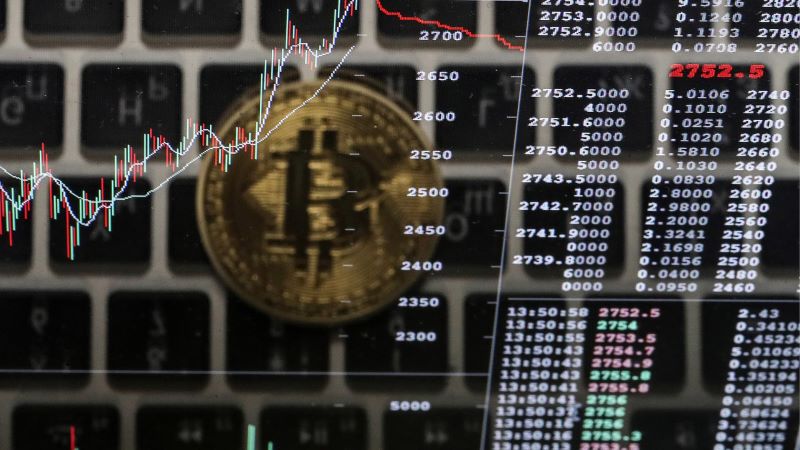In the ever-evolving landscape of digital assets, understanding effective cryptocurency analysis method is crucial for investors looking to make informed decisions. This article will explore these methods in detail, highlighting their strengths and practical applications.
What is Cryptocurency Analysis Method?
A cryptocurency analysis method is a collection of techniques and tools used to evaluate, predict the value, and identify trends of cryptocurrencies in the market. The primary goal of these methods is to help investors and stakeholders make informed decisions based on technical, fundamental, or market sentiment factors.
Common Characteristics of Cryptocurency Analysis Method:
- Based on Market Data: All cryptocurency analysis method utilize market data to assess trends and make predictions. This may include price, trading volume, historical volatility, or investor sentiment from information channels such as news and social media.
- Support Investment Decision-Making: The main objective of these methods is to provide information so that investors can make more informed decisions, such as when to buy, sell, or hold cryptocurrency assets. Each cryptocurency analysis method offers a different perspective on the market, helping investors optimize their investment strategies.
- Risk Mitigation: Analysis methods are not only aimed at seeking profits but also help investors identify and manage risks. By evaluating potential factors in the market, investors can make decisions to minimize potential losses.
- Flexibility and Diversity: Each cryptocurency analysis method can be adjusted and combined with other methods to suit the market situation and individual investment styles. Investors can use multiple methods simultaneously to gain a more comprehensive view of the cryptocurrency market.
- Predictive Nature: Cryptocurrency analysis method is always predictive, relying on past data and patterns to forecast future price trends. However, due to the high volatility of the market, these methods always carry a degree of risk and do not guarantee absolute accuracy.
- Dependence on Technology and Data: With the development of technology and data collection systems, analysis methods are becoming increasingly sophisticated, enabling investors to access powerful tools such as artificial intelligence (AI), blockchain data, and automated analysis. This also increases the accuracy and effectiveness of the analysis methods. The evolution of blockchain technology and cryptocurrencies has led to more advanced analytical tools, aiding investors in their decision-making process.
Overall, cryptocurency analysis method to provide insights and support decision-making while minimizing risk in the volatile cryptocurrency market.
Fundamental Analysis in Cryptocurrency
Fundamental Analysis is one of the most important cryptocurency analysis method used to evaluate the potential of various cryptocurrencies, focusing on the fundamental factors that affect the long-term value of the asset. Instead of solely relying on technical data or price charts, fundamental analysis delves into the foundational elements of a cryptocurrency project to determine its intrinsic value.
- Technology and Protocol: The first factor that fundamental analysis examines is the technology and protocol used by the cryptocurrency project. This includes evaluating the project’s blockchain, scalability, transaction speed, security, and other technological innovations. Coins with groundbreaking technology often attract significant attention from long-term investors as they have the potential to disrupt the industry or develop widespread practical applications.
- Development Team: The team behind a cryptocurrency project is a key factor in fundamental analysis. Projects led by reputable experts in the technology, blockchain, or finance industries are often viewed more favorably. A strong team instills confidence in the project’s ability to grow and expand in the future.
- Community and Ecosystem: The user community and supporting partners are also important factors in fundamental analysis. A large, active, and loyal community not only provides financial support but also drives the project’s development through contributing ideas and real-world use cases. Additionally, corporate partners or other projects within the ecosystem can influence the success of the coin.
- Real-World Applications: A core part of fundamental cryptocurency analysis method is examining how a cryptocurrency can be applied in the real world. Coins that can solve major problems or create real value in industries such as finance, healthcare, supply chains, etc., will have greater long-term growth potential.
- Financial Situation and Market Capitalization: Analyzing financial factors includes examining market capitalization, trading volume, liquidity, and coin distribution. A coin with a large market capitalization and high trading volume is generally less volatile, while a coin with a smaller market capitalization often has greater growth potential but also comes with higher risks.
- Regulatory Compliance: Regulations and the legal framework are crucial factors in fundamental analysis. Regulations from governments and financial authorities can directly impact the development of a cryptocurrency. Coins with high transparency, regulatory compliance, and government approval have more opportunities for long-term growth.
- Development Roadmap: Finally, analyzing the project’s development roadmap is an important step. A clear and transparent roadmap with specific development milestones creates confidence for investors. This shows that the development team is committed to the project’s long-term vision and has a clear plan for the future.
In summary, fundamental analysis is a vital cryptocurency analysis method that helps investors evaluate the intrinsic value and long-term potential of cryptocurrencies by examining various fundamental factors. By considering these aspects, investors can make more informed decisions and identify promising investment opportunities in the ever-evolving world of blockchain technology and cryptocurrencies.
Technical Analysis in Cryptocurrency
Technical Analysis (TA) is a popular cryptocurency analysis method in the cryptocurrency market aimed at predicting price movements of assets based on historical data, charts, and price trends. Instead of focusing on fundamental factors about the project or development team, technical analysis relies on market data to identify price patterns and make investment decisions.
Basic Concepts
Technical analysis is based on the theory that all factors influencing prices (supply and demand, news, market sentiment, etc.) are already reflected in the current price. Therefore, analyzing price charts, trading volume, and technical indicators can help investors predict future trends. This approach is a core component of understanding what is cryptocurency analysis method.
Price Charts and Patterns
An essential part of technical analysis is the analysis of price charts, which helps identify trend patterns such as candlestick patterns, head and shoulders patterns, triangles, or support and resistance levels. These patterns help investors determine effective entry and exit points, predicting future price directions.
- Japanese Candlestick Patterns: These are the most common analysis tools in cryptocurrency, helping investors grasp market sentiment through the shape of price candles. For example, reversal candlestick patterns like Doji, Hammer, or Engulfing signal upcoming trend changes.
- Support and Resistance Levels: These are critical price points that the market often struggles to break through. Support levels are price points where the asset tends to rebound after falling, while resistance levels are points where the price tends to decline after rising. Understanding these levels helps investors determine when to buy or sell.
Technical Indicators
Technical cryptocurency analysis method often uses mathematical indicators calculated based on price and trading volume to provide additional information about market trends or momentum. Some popular indicators in the cryptocurrency market include:
- Moving Averages: These are indicators based on the average price of an asset over a period. Simple Moving Average (SMA) and Exponential Moving Average (EMA) are two common types, helping to identify long-term trends.
- Relative Strength Index (RSI): RSI is an oscillator used to assess whether an asset is overbought or oversold. When this indicator exceeds 70, it’s a sign that the asset might be overbought and could experience a price correction. Conversely, when it’s below 30, the asset might be oversold and could potentially rebound.
- Bollinger Bands: This tool creates two bands surrounding the price, helping to determine the market’s volatility. When the price moves outside the Bollinger Bands, it often signals an upcoming correction or trend change.
Trading Volume
Trading volume is a crucial factor in confirming trends. A strong price trend is usually accompanied by high trading volume. If the price increases or decreases but the volume doesn’t change significantly, it may indicate that the trend is unstable and could change soon.
Market Sentiment
Although technical analysis primarily relies on historical data, market sentiment also plays a significant role in price prediction. Indicators like the Fear and Greed Index help measure the overall emotions of investors and can be used in conjunction with technical analysis to make informed decisions.
Market Cycles
In technical analysis, identifying market cycles is important to understand long-term trends. Price cycles in cryptocurrency tend to be more volatile and faster than in traditional markets, so recognizing these cycles helps investors take advantage of the best trading opportunities.
Risks in Technical Analysis
While technical analysis provides powerful tools for price prediction, it has limitations. Cryptocurrency prices can be influenced by unexpected factors such as political news, regulatory changes, or security events, which may not be fully reflected in charts. Therefore, combining technical analysis with other cryptocurency analysis method and maintaining flexibility in investment strategies is essential.
Sentiment Analysis in Cryptocurrency
Sentiment Analysis is a cryptocurency analysis method that focuses on evaluating and analyzing the emotions and opinions of investors and the community regarding a specific cryptocurrency. In the cryptocurrency field, where prices often fluctuate sharply based on emotions and social trends, sentiment analysis plays a crucial role in predicting price trends and user behavior.
Data Sources for Sentiment Analysis
Sentiment cryptocurency analysis method utilizes various information sources to assess the emotions of the cryptocurrency community, including:
- Social Media: Platforms like Twitter, Reddit, Telegram, and Discord communities are where cryptocurrency investors and enthusiasts often discuss assets. Comments and posts on these platforms provide valuable insights into investor sentiment.
- Forums and Blogs: Forums like Bitcointalk or specialized cryptocurrency blogs are also rich data sources for sentiment analysis.
- News: Articles from financial or technology news sites, especially those with a significant impact on the market, also influence investor emotions and attitudes.
- Automated Assessment Tools: Some platforms use Artificial Intelligence (AI) and Machine Learning to automatically analyze large datasets from social media and news, providing real-time sentiment indicators.
Impact of Market Sentiment on Cryptocurrency Prices
Market sentiment can strongly influence cryptocurrency prices due to the market’s inherent volatility. When the community becomes optimistic about a particular coin, they may increase their buying, driving the price up. Conversely, if there is widespread panic or fear, investors may simultaneously sell, causing the price to plummet. Some specific impacts include:
- FOMO (Fear of Missing Out): When a coin is experiencing a strong price increase, many investors may fear missing out on the opportunity, leading them to buy even when the price is already high, further pushing the price up.
- FUD (Fear, Uncertainty, Doubt): On the other hand, if negative news or unfavorable events arise, investors may panic and sell off, causing the price to drop suddenly.
Advantages of Sentiment Analysis
Quickly Reflects Market Emotions: Sentiment analysis can provide an immediate view of the community’s emotions, helping investors identify short-term trends before they actually occur on the price chart.
- Short-Term Support Tool: As market sentiment tends to fluctuate with the latest news and events, this cryptocurency analysis method is particularly effective in predicting short-term movements, helping investors seize trading opportunities.
- Detecting Unusual Signals: Sentiment analysis can help investors detect unusual signals or sudden “pumping” or “dumping” in the market, allowing for timely decision-making.
Limitations of Sentiment cryptocurency analysis method
- Difficult to Measure Accurately: Human emotions and opinions are challenging to measure and quantify accurately. Signals gathered from social media platforms may not represent the entire market.
- Susceptible to Manipulation: Information on social media and forums can be manipulated by groups or individuals to create artificial trends (pump-and-dump). This can lead to incorrect conclusions if investors rely solely on sentiment analysis.
- Short-Term and Emotional: Market sentiment tends to reflect short-term emotions, which may not provide a comprehensive view of the long-term prospects of a cryptocurrency.
Understanding the cryptocurency analysis method is essential for making informed investment decisions in 2024. Whether you’re relying on fundamental analysis, technical analysis, or sentiment analysis, each approach offers unique insights into the market dynamics of cryptocurrencies. By combining these methods, investors can better navigate the complexities and uncertainties of the crypto market. For the latest insights and expert opinions, stay updated with Blockchainbulletinweekly to remain ahead of the trends in the evolving world of cryptocurrency.




